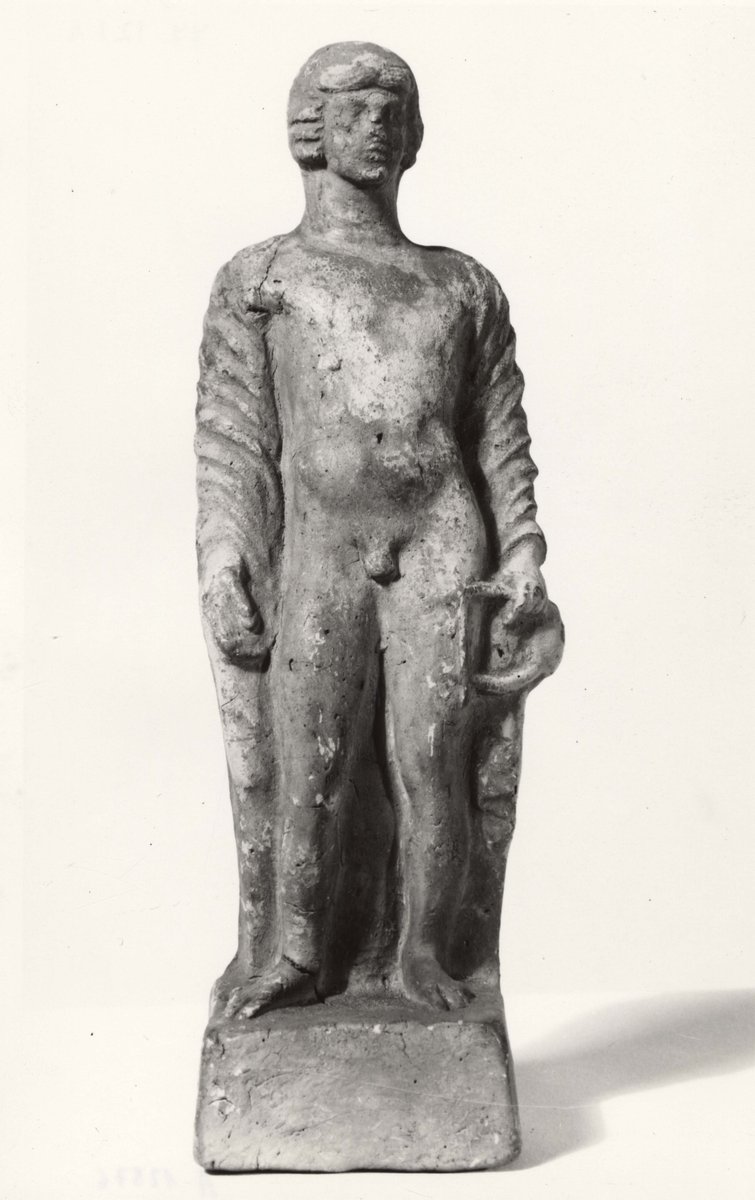
Standing Youth with Kithara
Classical Antiquities
| Date | turn of the 2nd and 3rd centuries A.D. |
|---|---|
| Object type | relief |
| Medium, technique | carved, limestone |
| Dimensions | height: 52 cm, width: 48 cm |
| Inventory number | 8431 |
| Collection | Classical Antiquities |
| On view | Museum of Fine Arts, Basement Floor, Classical Antiquity, Hellas – Italy – Rome |
Palmyra in Syria (biblical Tadmor) was one of the focal points of the far eastern Roman trade routes. The oasis first grew into a large city, before, in the mid-3rd century AD, briefly becoming an empire. The shape of this Palmyrene tombstone – a bust set in a circular frame – is a frequent motif in Graeco-Roman art, while the turban decorating the woman’s head is typical of eastern cultures. She wears a chiton and a mantle pulled over her head: this is the characteristic representation of a chaste woman in Graeco-Roman culture. Her jewellery is a sign of her wealth. An old photograph made it possible to reconstruct the fragment of the Aramaic inscription engraved next to the portrait: BRT (‘the daughter of someone’). The stele is typical of Palmyrene art.
Material analyses have shown that the relief was made of Palmyrene limestone.
This record is subject to revision due to ongoing research.